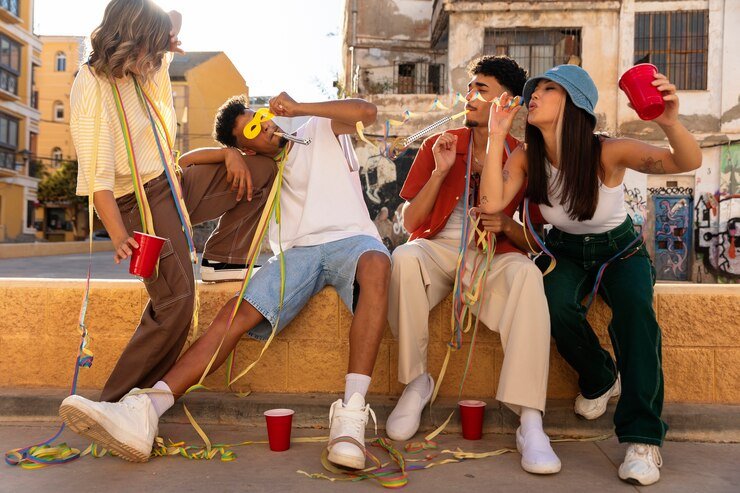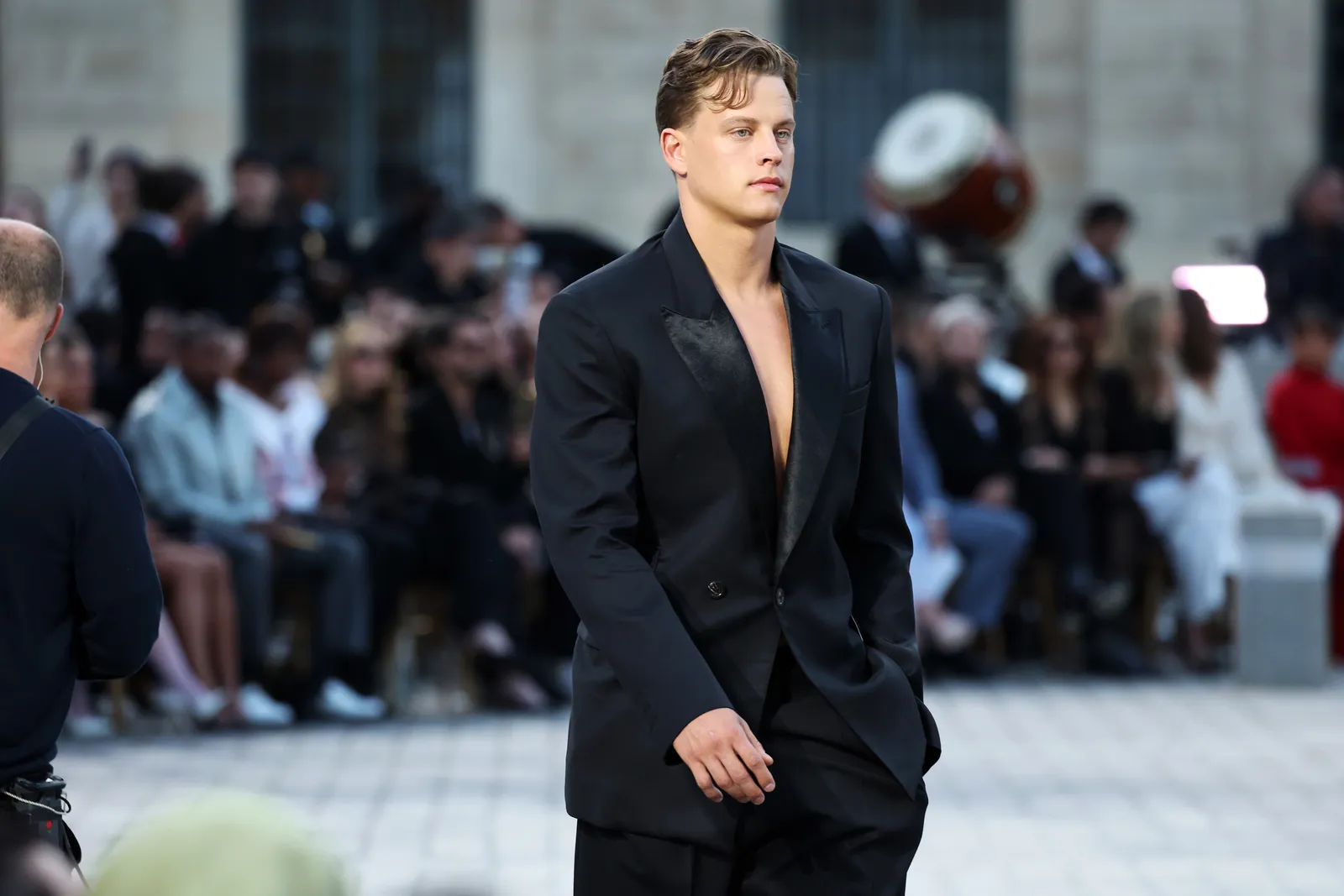
Introduction to Dorky Trends
In a world where the lines between cool and quirky are increasingly blurred, dorky trends have taken center stage in popular culture. From oversized glasses to retro video games, our collective embrace of all things “dorks” has transformed what it means to be passionate about niche interests. Whether you proudly call yourself a dork or simply enjoy indulging in the whimsical side of life, there’s no denying that these trends resonate with many.
As we dive deep into this colorful universe, we’ll explore how dorky trends reflect broader shifts in society and offer insight into who we are today. So grab your favorite gaming controller or dust off those board games; it’s time to celebrate the delightful charm of being a dork!
Evolution of Popular Culture and its Impact on Society
Popular culture has undergone remarkable changes over the decades. Each era introduces new trends that reflect societal values and technological advancements.
From the rebellious rock ‘n’ roll of the 1950s to today’s streaming giants, we see how entertainment shapes identities. Movies, music, and art mirror our collective experiences. They connect us through shared feelings and ideas.
Dorky trends often emerge during times of social upheaval or transformation. The embrace of geek culture is a testament to this shift. When once marginalized hobbies gain popularity, they redefine community norms.
Moreover, popular culture can challenge stereotypes and foster inclusivity. It encourages people to express their quirks without fear of judgment. This evolution beckons more individuals into mainstream conversations about identity and belonging.
As dorks celebrate their passions openly, society becomes richer for it—allowing everyone a chance to engage in diverse interests freely and joyfully.
The Rise of Nostalgia in Pop Culture
Nostalgia has become a powerful force in today’s pop culture landscape. It creates an emotional connection, drawing audiences back to simpler times. Shows and movies from the ’80s and ’90s are suddenly everywhere, often remade or rebooted with a modern twist.
This trend taps into collective memories. Fans find comfort in familiar characters and storylines that shaped their childhoods. Streaming platforms have capitalized on this sentiment, providing easy access to retro content.
Music is also experiencing a nostalgic revival. Artists are sampling classic hits or recreating vintage sounds, sparking renewed interest among diverse age groups.
Even fashion reflects this yearning for the past—think high-waisted jeans and colorful windbreakers reminiscent of earlier decades. The rise of nostalgia isn’t just about looking back; it’s about finding joy in shared experiences while navigating today’s fast-paced world.
Analyzing the Influence of Nerd and Geek Culture
Nerd and geek culture has shifted from the fringes to the forefront of mainstream society. This transformation has redefined what it means to be a “dork.”
Once relegated to comic book shops and gaming basements, today’s dorks are celebrated for their passions. Movies like “The Avengers” or series such as “Stranger Things” exemplify this cultural embrace. Audiences flock not just for entertainment but also for connections based on shared interests.
Conventions like Comic-Con have become global phenomena, drawing fans who celebrate everything from anime to vintage video games. They foster communities where creativity thrives.
This influence extends beyond entertainment; it shapes fashion trends, language, and even technology. From graphic tees featuring beloved characters to gadgets inspired by sci-fi movies, nerd culture is now woven into everyday life in unexpected ways.
People proudly identify as dorks, reclaiming that label with pride. It’s empowering and liberating—a celebration of individuality within a vibrant community.
Understanding the Appeal of ‘Dorky’ Fashion and Style
Dorky fashion has carved out a niche that resonates with many. It embraces individuality over conformity, allowing wearers to express their true selves.
Bright colors and quirky patterns often dominate this style. Think oversized glasses paired with graphic tees or mismatched socks with sandals. It’s about breaking the mold and challenging traditional aesthetics.
This trend also thrives on nostalgia, harkening back to childhood favorites like cartoon characters and retro designs. Wearing these items evokes fond memories and creates connections among fans.
Furthermore, dorky fashion encourages inclusivity. It welcomes people of all shapes, sizes, and backgrounds without judgment. The vibe is carefree—embracing imperfections rather than hiding them.
Social media plays a crucial role in amplifying this appeal as platforms showcase unique styles from around the globe. Dorks become influencers by celebrating their quirks unapologetically, inspiring others to join in on the fun of being themselves.
Dorky Hobbies and Activities: From Board Games to Cosplay
Dorky hobbies have carved out a vibrant niche in popular culture. Board games, once relegated to family gatherings, have transformed into elaborate adventures. Today’s tabletop experiences feature intricate storylines and immersive worlds.
Cosplay has taken this creativity a step further. Fans turn beloved characters from movies, comics, and video games into their own masterpieces. The dedication involved is astounding; meticulous crafting often leads to stunning results.
Other dorky activities like knitting or model-building are also making waves. These pastimes foster community among enthusiasts who share tips and tricks online.
Even gaming marathons have emerged as social events, uniting players across the globe in friendly competition.
Whether you’re rolling dice or stitching costumes, embracing these interests brings joy and connection with others who celebrate similar passions.
The Future of Dorky Trends: Where is it Heading?
Dorky trends are evolving rapidly, often influenced by technology and changing social dynamics. As virtual reality and augmented reality gain traction, we might see an infusion of these elements into dork culture. Imagine immersive board games where players can interact in a digital realm.
The rise of influencer culture also plays a significant role. Many influencers proudly embrace their “dorkiness,” showcasing it on platforms like TikTok and Instagram. This visibility normalizes niche interests and sparks broader acceptance.
Moreover, the blend of fashion with geek aesthetics is likely to continue growing. Designers are increasingly incorporating playful motifs from video games or comic books into mainstream apparel lines.
As more people find joy in embracing their inner dorks, communities will expand further online and offline. The future looks vibrant for those who celebrate uniqueness through hobbies, style choices, and shared passions that defy traditional norms.
The Impact of Social Media on Dorky Trends
Social media has become a powerful catalyst for dorky trends. Platforms like Instagram, TikTok, and Twitter allow enthusiasts to showcase their interests in ways that were previously limited to niche communities.
This digital landscape fosters connections among fans of comic books, video games, and quirky fashion. A single viral post can elevate an obscure reference into mainstream consciousness overnight.
Influencers play a significant role too. They embrace what once might have been considered “dorky,” normalizing it for broader audiences. Their authenticity resonates with followers who find joy in shared passions.
Hashtags amplify visibility, making it easier for people to discover content related to their favorite hobbies or aesthetics. This phenomenon encourages even more creativity within the community as individuals seek unique expressions of their identities.
As social media continues evolving, its influence on dork culture will likely grow stronger. New platforms emerge regularly, each offering fresh opportunities for connection and expression among self-identified dorks.
Examples of Dorky Trends in Fashion, Music, and Entertainment
Dorky trends have made their mark across various creative fields. In fashion, oversized graphic tees paired with high-waisted jeans scream nostalgia while embracing geek chic. Accessories like chunky sneakers and retro backpacks add a playful touch.
When it comes to music, quirky bands often embrace themes from video games or sci-fi movies in their lyrics and visuals. Acts like Owl City and the band Weezer celebrate dork culture through catchy melodies that resonate with fans who grew up loving all things nerdy.
Entertainment thrives on these trends too. Shows like “Stranger Things” tap into 80s nostalgia, showcasing characters who are undeniably dorky yet relatable. Meanwhile, comic book adaptations dominate the box office, proving that being a fan of superheroes is far from uncool.
Whether it’s through bold fashion statements or catchy tunes, dorks continue to inspire creativity in diverse ways.
Criticism and Controversies Surrounding Dorky Trends
Dorky trends often face criticism for promoting stereotypes. Some argue that the celebration of nerd culture can lead to exclusionary behaviors. Not everyone feels welcome in spaces traditionally dominated by self-proclaimed “dorks.”
Another point of contention is the commercialization of what was once niche interest. Brands frequently co-opt these trends, making them feel less authentic and more like a marketing ploy. This commodification can alienate loyal fans who value originality.
Moreover, some dorky hobbies attract backlash from skeptics who regard them as frivolous or childish. Board games and cosplay are sometimes dismissed as mere pastimes rather than legitimate forms of cultural expression.
Yet, despite the controversies, many enthusiasts continue to embrace these quirks unapologetically. The vibrant communities surrounding dorky interests often foster creativity and acceptance—qualities that resonate deeply with those involved.
Conclusion
Dorky trends have carved a unique space in popular culture. These movements celebrate the quirks and eccentricities that many once hid away. Now, they shine brightly, inviting everyone to join in on the fun.
As we navigate this vibrant landscape, it’s clear that dorkiness is more than just a phase. Whether through fashion choices or beloved hobbies like board games and cosplay, these trends foster community and connection. They remind us of the joy found in embracing our true selves.
Social media continues to amplify these interests, making it easier for dorks around the world to share their passions with others. This interconnectedness supports an inclusive environment where everyone can be themselves without fear of judgment.
The future holds exciting possibilities as dorky culture evolves further. New generations will likely redefine what it means to be a “dork,” leading to fresh interpretations of style, entertainment, and hobbies.
So whether you’re proudly donning your favorite graphic tee or engaging in spirited debates over tabletop strategies with friends, remember: being a dork is something worth celebrating. After all, it’s about finding joy in what makes you uniquely you—a sentiment that resonates far beyond any trend cycle.
RELATED POSTS
View all


